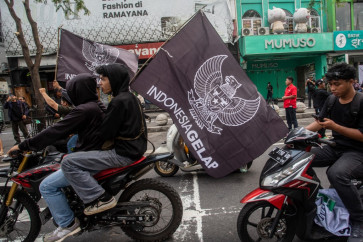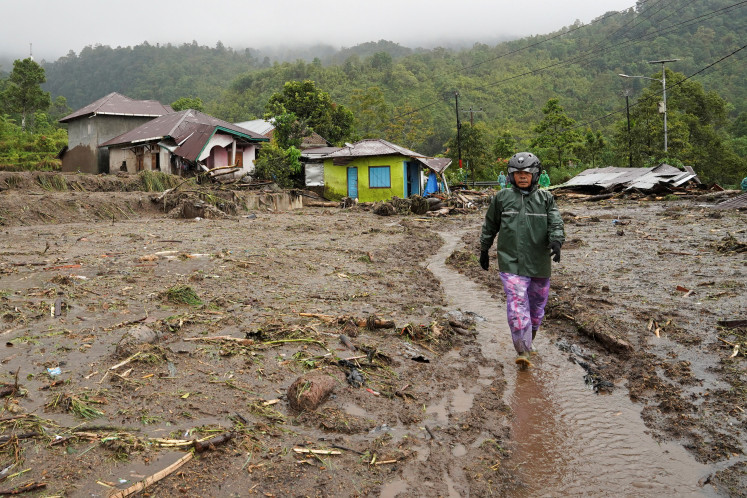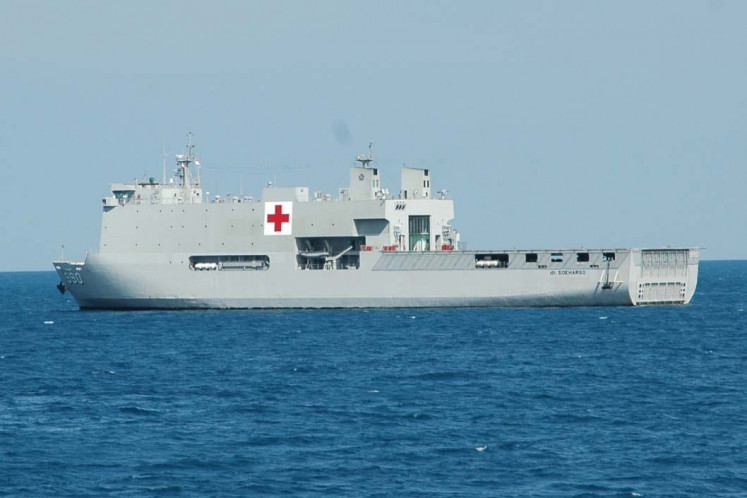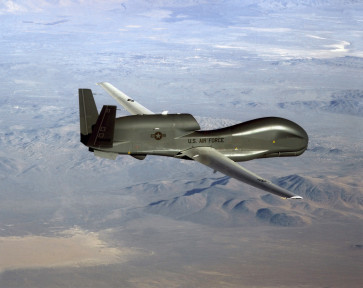Popular Reads
Top Results
Can't find what you're looking for?
View all search resultsPopular Reads
Top Results
Can't find what you're looking for?
View all search resultsCan kamikaze drones claim the right of sea lane passage?
As drone warfare expands, Indonesia must decide whether its archipelagic sea lanes are open corridors or off-limits to weapons.
Change text size
Gift Premium Articles
to Anyone
 This undated US Air Force file photo released on June 20, 2019, shows a photo of an RQ-4 Global Hawk unmanned surveillance and reconnaissance aircraft. A US spy drone was some 34 kilometers from the nearest point in Iran when it was shot down over the Strait of Hormuz by an Iranian surface-to-air missile on June 20, 2019, a US general said.
(AFP/Handout/US Air Force)
This undated US Air Force file photo released on June 20, 2019, shows a photo of an RQ-4 Global Hawk unmanned surveillance and reconnaissance aircraft. A US spy drone was some 34 kilometers from the nearest point in Iran when it was shot down over the Strait of Hormuz by an Iranian surface-to-air missile on June 20, 2019, a US general said.
(AFP/Handout/US Air Force)
W
hen Iran launched waves of drones and missiles at Israel in their recent conflict, most were intercepted before reaching their targets. Yet beyond the headlines about defense systems and regional escalation, another issue lurked beneath the surface: the legal status of unmanned weapons moving through neutral airspace.
This legal dilemma is not confined to the Middle East. In Southeast Asia, Indonesia, as the world’s largest archipelagic state, sits astride sea lanes that connect the Pacific and Indian Oceans and link northern approaches to Australia. These routes are central not only to global trade but also to military planning.
The Indo-Pacific has become a testing ground for unmanned systems, from China’s rapid expansion of drone capabilities and Australia’s integration of drones into AUKUS-related defense planning to the widespread use of loitering munitions in Ukraine. In this environment, the stakes for how archipelagic sea lanes are regulated have never been higher.
Under the United Nations Convention on the Law of the Sea (UNCLOS), archipelagic states like Indonesia must allow "archipelagic sea lanes passage" for ships and aircraft of all states. This right is fundamental to global navigation and trade.
But what happens when the object moving through those lanes is not a traditional ship or aircraft, but a kamikaze drone or an unmanned vessel designed for a one-way mission?
UNCLOS was negotiated in the 1970s and 1980s, long before loitering munitions, suicide drones or autonomous sea craft became realities of modern warfare. The drafters of the convention could not have anticipated that belligerents might one day send unmanned weapons across thousands of miles, transiting through neutral archipelagic waters en route to their targets.
Under current law, only ships and aircraft are entitled to passage. Missiles and munitions, by contrast, have no such right. For example, a Tomahawk cruise missile fired from a submarine cannot legally claim the right to fly through Indonesia’s airspace above archipelagic sea lanes on its way to another state.


















